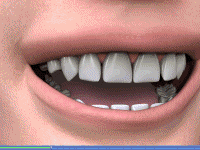
TOOTH JEWELLERY
Q What is Tooth Jewellery?
A Tooth Jewellery is the latest fashion craze to hit the UK. Tooth jewellery classic designs are an elegant compliment to standard jewellery. When placed on the tooth, the jewellery creates a distinctive expression of ones individuality.
There are 2 main types of tooth jewellery available: –
Twinkles: – This is a collection of 24-carat gold and white gold jewellery. The jewellery is available in over 50 different designs with some including diamonds, sapphires and rubies.
Dental Gems: – Are a range of glass crystals are available in nine different colours diamond, rainbow, ruby, sapphire, emerald, emerald green, aquamarine, pink, sapphire light.
Q Is The Jewellery For Males Or Females?
A Both there are many different designs which appeal to everyone. Children under the age of 16 should have parental consent.
Q How Do You Apply them?
A The dentist will use a dental adhesive to apply the Jewellery to your tooth.
Q Does The Application Procedure Hurt?
A NO! The procedure is similar to placing an orthodontic bracket on a tooth. There is no drilling involved and the procedure is completely painless
Q How Long Does The Application Procedure Take?
A The fitting procedure should take no more than 10 to 15 minutes
Q How Long Will The Jewellery Stay On My Tooth?
A The tooth Jewellery can last on your tooth indefinitely or for as long as you want it.
Q Will The Tooth Jewellery Harm My Tooth?
A When properly placed by a dentist, the tooth Jewellery will not damage or harm your tooth in any way. Tooth jewellery should only be applied to natural teeth.
Q How Do I Remove The Tooth Jewellery When I No Longer Want it?
A If you would like to remove your tooth Jewellery the it can be taken off by a dentist at any time
Q How Much Does It Cost?
A Prices vary from design to design, ask your dentist for more information
